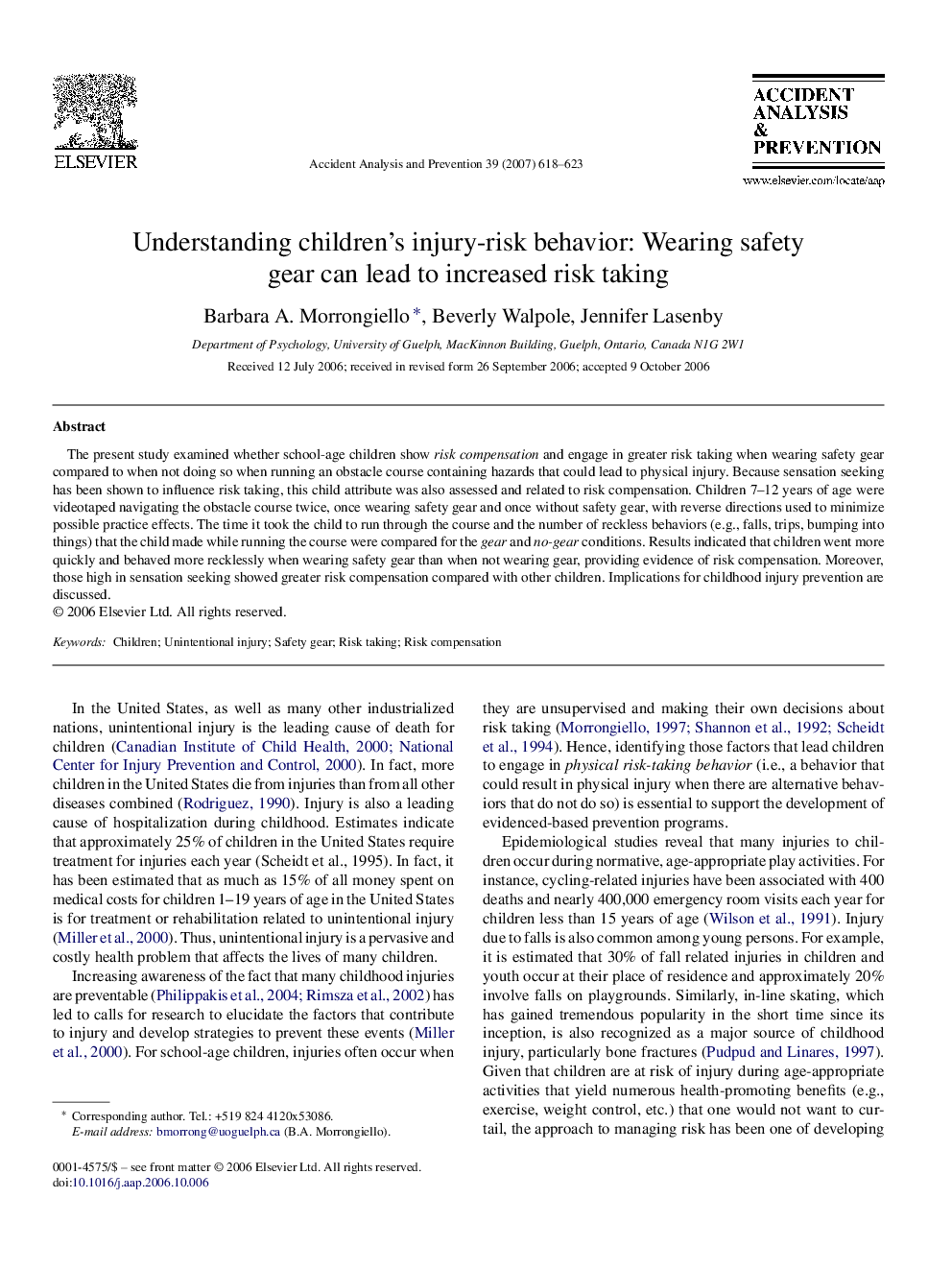| Article ID | Journal | Published Year | Pages | File Type |
|---|---|---|---|---|
| 573837 | Accident Analysis & Prevention | 2007 | 6 Pages |
The present study examined whether school-age children show risk compensation and engage in greater risk taking when wearing safety gear compared to when not doing so when running an obstacle course containing hazards that could lead to physical injury. Because sensation seeking has been shown to influence risk taking, this child attribute was also assessed and related to risk compensation. Children 7–12 years of age were videotaped navigating the obstacle course twice, once wearing safety gear and once without safety gear, with reverse directions used to minimize possible practice effects. The time it took the child to run through the course and the number of reckless behaviors (e.g., falls, trips, bumping into things) that the child made while running the course were compared for the gear and no-gear conditions. Results indicated that children went more quickly and behaved more recklessly when wearing safety gear than when not wearing gear, providing evidence of risk compensation. Moreover, those high in sensation seeking showed greater risk compensation compared with other children. Implications for childhood injury prevention are discussed.
